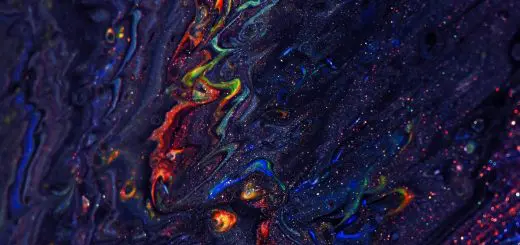How Is the Rosca de Reyes Tradition Different Across Countries?

Looking for more amazing products? Check out our online store and explore our collection here! Happy shopping!
Before diving in, please note: This post is for informational purposes only. If you’d like to know more about how we approach topics, feel free to check out our friendly Disclaimer Page.
Hey there, amazing readers! 
We’re committed to delivering quality posts, and your support (even just sticking around despite the ads) means everything to us. So, bear with us, and thanks for helping us keep the good vibes rolling. Now, on to the fun stuff!
TRANSLATE BUTTON AT THE END OF THE ARTICLE
A Quick Overview
When the holiday season rolls around, many cultures have their own beloved customs.
One such delightful tradition is Rosca de Reyes, a sweet bread enjoyed in various forms across different countries.
This cake, which celebrates the Feast of the Epiphany on January 6, has fascinating variations that reflect local customs and flavors.
Let’s take a spirited journey around the globe to explore how this sweet treat ignites joy and community in diverse ways.
A Sweet Introduction to the Rosca de Reyes Tradition
Rosca de Reyes, or King’s Ring, is more than just a festive dessert; it embodies the spirit of celebration.
In essence, it commemorates the arrival of the Three Wise Men who brought gifts to the baby Jesus.
The shape of the bread, often circular, symbolizes a crown, representing the monarchy of Christ.
As we dive into this tradition, it’s essential to recognize that each country adds its flair to this beloved cake.
In places where the Rosca is celebrated, you’ll find gatherings filled with laughter, joy, and a touch of competition as friends and family search for hidden surprises within.
It’s a time for bonding, reminiscing, and indulging.
I can still remember the excitement of searching for the little figurine hidden in the cake with my family.
Finding it meant a year of good fortune, and boy, did we take that seriously!
Let’s explore how this delightful tradition unfolds in various cultures.
The Origins of Rosca de Reyes: A Cultural Journey
The history of Rosca de Reyes is rich and intertwined with Christian traditions.
The roots trace back to ancient Roman festivities known as Saturnalia, which celebrated the winter solstice.
Over time, these customs evolved, and when Christianity spread, they adapted into the observance of Epiphany.
In medieval Europe, the cake became a popular way to celebrate this day.
The incorporation of hidden figurines was introduced, symbolizing Jesus and the joy of discovery.
Spanish colonizers brought this custom to Latin America, where it flourished and transformed into what we now recognize as Rosca de Reyes.
Even today, you can find different versions of this cake in countries with significant Spanish influence.
It’s a reminder of how traditions can travel and evolve, capturing the hearts and palates of each culture they touch.
Rosca de Reyes in Mexico: A Festive Family Gathering
In Mexico, Rosca de Reyes holds a special place in hearts and homes.
The day itself is a national holiday, and families gather to enjoy this sweet bread, often accompanied by hot chocolate.
The rosca is beautifully adorned with dried and candied fruits, adding a splash of color that makes it irresistible.
The fun begins when the cake is sliced, and everyone hopes to find the hidden figurine.
The person who discovers it is crowned the “King” or “Queen” of the day, given the honor of hosting the next celebration.
It’s a playful twist that sparks laughter and camaraderie.
What’s more, Rosca de Reyes signifies the end of the Christmas season in Mexico.
It’s a poignant reminder of the joy that comes from family, togetherness, and sharing traditions.
I remember my abuela meticulously decorating the rosca, her eyes twinkling with excitement as she prepared for the big day.
Spain’s Twists: How They Celebrate with Roscón de Reyes
In Spain, the celebration of the Epiphany is just as vibrant.
Known as "Roscón de Reyes," this cake is a staple of Spanish homes during the holiday.
It typically features a rich dough flavored with orange blossom, giving it a delightful fragrance.
The Roscón is often filled with whipped cream or other sweet fillings, and like its Mexican counterpart, it hides a figurine and a dried bean.
If you find the figurine, you get to wear a paper crown.
But watch out!
The one who finds the bean has the “honor” of buying the Roscón next year.
Spanish families take their celebrations seriously.
The Roscón is usually enjoyed after the Three Kings Parade, a colorful event filled with music, dancing, and the magic of storytelling.
I can almost hear the laughter and see the smiles as families gather around the table to share their roscón.
The Unique Variations of Rosca de Reyes in Latin America
Throughout Latin America, the Rosca de Reyes tradition varies slightly, but the essence remains the same.
Countries like Venezuela, Colombia, and the Dominican Republic have embraced this delightful cake with their regional twists.
In Venezuela, the cake can be filled with guava paste or cream cheese, adding a tropical twist.
Colombian roscas are often sweeter, with more sugar and cinnamon, creating a rich flavor profile.
Meanwhile, the Dominican Republic has its unique spin by incorporating nuts and additional spices to the dough.
Despite these variations, the spirit of sharing and celebration remains universal.
Families gather, stories are exchanged, and everyone hopes to find the hidden treasure in their slice.
As someone who enjoys traveling, it’s mesmerizing to see how a single tradition can take on different flavors and meanings in various cultures.
Brazil’s Bolo Rei: A Colorful Twist on Tradition
In Brazil, the Rosca de Reyes is celebrated as "Bolo Rei," which translates to "King Cake." This version comes with a vibrant twist.
It features a flakier dough and is often filled with nuts, dried fruits, and sometimes even chocolate.
The Bolo Rei is usually larger and decorated with a lavish array of fruits, making it a centerpiece of any gathering.
Similar to other traditions, finding the hidden figurine means you’ll be the king or queen for the day.
And yes, there’s a bean lurking somewhere too!
Bolo Rei is part of a broader celebration known as "Festa de Reis," where communities come together for street festivals filled with music and dance.
I can imagine the lively atmosphere, with locals sharing laughter and stories while enjoying this beautiful cake together.
The Dual Celebrations: Rosca de Reyes in Puerto Rico
Puerto Rico embraces Rosca de Reyes with a unique flair that reflects its rich cultural tapestry.
Known as "Rosca," this cake is a delightful blend of flavors, often enriched with spices and citrus zest.
In Puerto Rico, the day is celebrated not only as a religious observance but also as a time for family and friends to gather and enjoy one another’s company.
The cake is typically served with coquito, a coconut-based drink that adds a festive touch.
Much like in Mexico, the person who finds the figurine is crowned the king or queen.
However, there’s an added twist: the lucky one also takes on the responsibility of hosting next year’s festivities!
The spirit of togetherness shines brightly on this day, as Puerto Ricans gather to share love, laughter, and delicious treats.
How the U.S. Embraces the Rosca de Reyes Tradition
In the United States, particularly in areas with large Hispanic communities, the Rosca de Reyes tradition has gained popularity.
Bakeries offer their versions of the cake, often filled with cream or fruit preserves.
The festivities may vary, but the joy remains constant.
Families might host parties to celebrate the day, inviting friends and neighbors to join in the fun.
The cake is a conversation starter, a vessel for stories and laughter.
It’s common to see children excitedly searching for the hidden figurine, anticipating the outcome.
While the U.S. may not have the same deep-rooted customs as Mexico or Spain, it embraces the essence of community and celebration.
I’ve seen friends gather around a rosca, sharing their own stories and creating new memories.
France’s Galette des Rois: A Similar Yet Different Treat
In France, the tradition of celebrating Epiphany takes on a different form with the "Galette des Rois." This puff pastry cake is filled with almond cream, creating a delightful contrast to the sweeter Rosca varieties.
The Galette is typically round and beautiful, showcasing the artistry of French pastry-making.
Like the Rosca, it hides a figurine, and the person who finds it is crowned king or queen for the day.
Celebrating with a Galette often involves gathering friends and family, sharing laughter, and indulging in delicious pastries.
It’s fascinating to see how different cultures interpret the same celebration, showcasing their culinary skills and customs.
The Significance of the Baby Jesus Figurine in the Cake
One of the most charming elements of the Rosca de Reyes is the hidden figurine, often representing baby Jesus.
This tradition holds significant cultural and religious meaning.
The figurine serves as a reminder of Jesus’ birth and the joy that comes with it.
In many cultures, finding the figurine is a symbol of blessings and good fortune.
It’s a heartfelt way to keep the spirit of Christmas alive, extending the celebration beyond December.
I often think about how this tiny figurine holds the power to bring families together and spark joy and anticipation.
The bean often hidden within the cake adds an extra layer of fun and competition.
The combination of these elements creates a sense of unity and excitement, making the Rosca a cherished tradition for many families.
Savoring the Flavors: Common Ingredients Across Countries
While the Rosca de Reyes may vary in form, some ingredients remain consistent.
Flour, sugar, yeast, and eggs serve as the base, creating a soft and sweet bread.
Additionally, spices like cinnamon and nutmeg add warmth and depth to the flavors.
Fruits play a vital role too.
Dried and candied fruits are often used for decoration, adding brightness and sweetness.
The diversity of flavors reflects the local ingredients available, with each region adding its unique touch.
In a way, this cake becomes a canvas for creativity, showcasing the culinary heritage of each culture.
I love how something as simple as bread can turn into a masterpiece of flavors and traditions.
The Joy of Sharing: Cultural Rituals Around Rosca de Reyes
At its core, the Rosca de Reyes tradition is about sharing and community.
Families and friends come together, creating bonds and memories over this delightful cake.
The act of cutting the rosca symbolizes unity, with everyone eagerly awaiting their slice.
In many cultures, additional rituals accompany the sharing of the cake.
In Mexico, it’s common to serve hot chocolate alongside the rosca, enhancing the experience.
In Spain, the Roscón is often enjoyed with coffee, making for a delightful afternoon treat.
As someone who values connection, I find this aspect of the tradition heartwarming.
It’s a reminder that sharing food can create lasting bonds and foster a sense of belonging.
Conclusion
The Rosca de Reyes tradition showcases the beauty of cultural diversity.
From Mexico to Spain, Brazil to the U.S., each country adds its twist to this delightful celebration.
It’s a testament to how traditions can evolve while remaining rooted in joy and togetherness.
As we savor the flavors of this sweet bread, let’s cherish the moments shared with loved ones.
Whether it’s the thrill of finding the hidden figurine or the laughter echoing around the table, Rosca de Reyes is a celebration of life, love, and the joy of sharing.
So, next time January 6 rolls around, gather your friends and family, bake a Rosca, and create your own cherished memories!

The Enlightenment Journey is a remarkable collection of writings authored by a distinguished group of experts in the fields of spirituality, new age, and esoteric knowledge.
This anthology features a diverse assembly of well-experienced authors who bring their profound insights and credible perspectives to the forefront.
Each contributor possesses a wealth of knowledge and wisdom, making them authorities in their respective domains.
Together, they offer readers a transformative journey into the realms of spiritual growth, self-discovery, and esoteric enlightenment.
The Enlightenment Journey is a testament to the collective expertise of these luminaries, providing readers with a rich tapestry of ideas and information to illuminate their spiritual path.
Our Diverse Expertise
While our primary focus is on spirituality and esotericism, we are equally passionate about exploring a wide range of other topics and niches 

To ensure we provide the most accurate and valuable insights, we collaborate with trusted experts in their respective domains 
Our blog originally focused on spirituality and metaphysics, but we’ve since expanded to cover a wide range of niches. Don’t worry—we continue to publish a lot of articles on spirituality! Frequently visit our blog to explore our diverse content and stay tuned for more insightful reads.
Hey there, amazing reader! 
Check out our store here and take a peek at some of our featured products below! Thanks for being awesome!










